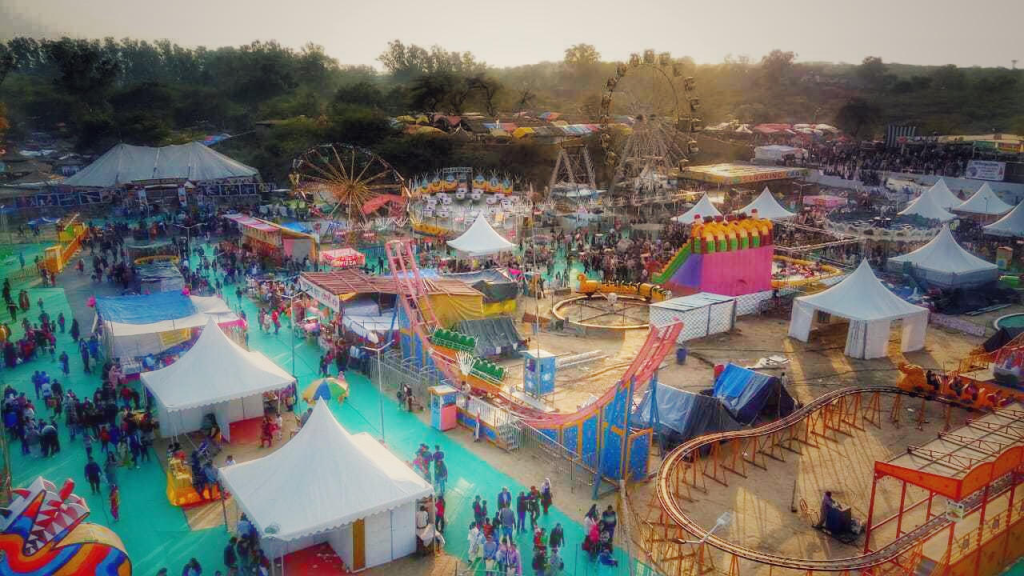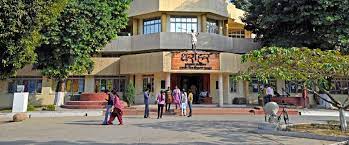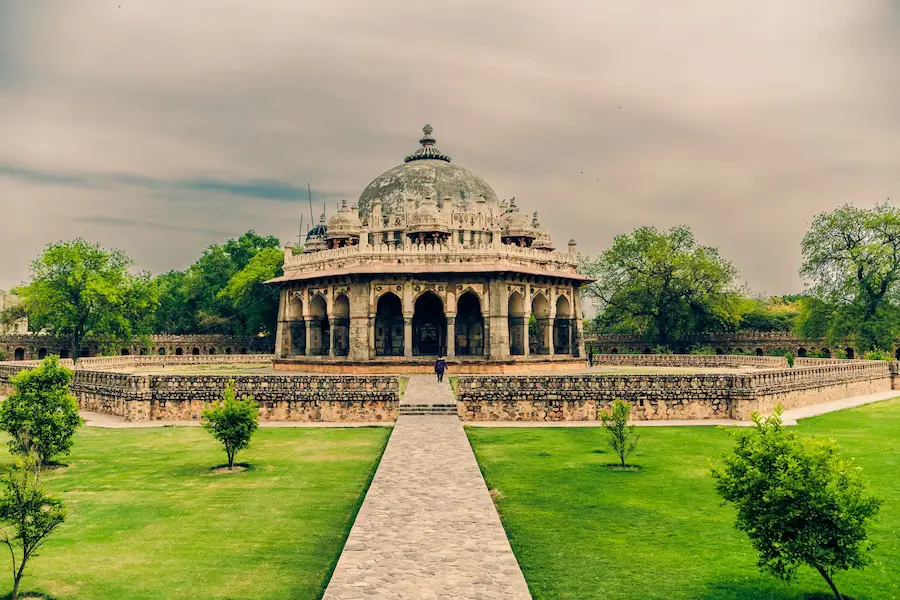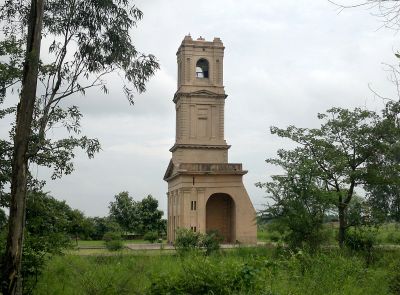Browse Items (64 total)
Sort by:
-
Raja Karna ka Qila
The mound, first surveyed by Alexander Cunningham, was excavated by D.B. Spooner of Archeological Survey of India in 1921-23. Later, the archeological excavations by Prof U.V.Singh of Department of Ancient Indian History, Culture and Archaeology, Kurukshetra University, Kurukshetra have yielded the remains of three cultural periods ranging from Circa 4th century BC to 3rd century AD.
Period-I (Circa 4th century BC to 1st Century BC) is represented by the Painted Grey ware of coarse fabric with beads of terracotta and semi-precious stones and other small antiquities of terracotta, bone etc. The two terracotta seals containing auspicious symbols (swastika, snake, nandipad and crescent) are the important antiquities of this period.
Period-II (Circa 1st century BC to 3rd Century AD) This cultural period is represented by houses of mud and baked bricks, red polished ware, stamped pottery, terracotta objects and a few clay sealings with Brahmi legends.
Period-III After a long gap, the site was rehabitated during the late medieval times in about 15th century AD. The remains of this period were identified on the northern fringe of the mound. It included houses, fortifications and a small house made of Lakhauri bricks with lime plaster. -
Raja Nahar Singh Palace
Today, the walls of Raja Nahar Singh Palace at Ballabgarh vibrate again with the echo of drums and trumpets… With the eager feet of visitors… And the exclaims of delight at the sight of this beautifully maintained palace of the legendary Raja Nahar Singh.
The revolt of 1857 was an important milestone in the history of our country. Raja Nahar Singh, ruler of the small state of Ballabgarh, played a key role in India’s struggle for Independence.
The Palace : The earliest parts of Raja Nahar Singh’s palace were constructed by his ancestor Rao Balram, who came to power in 1739. This construction continued in parts till about 1850. Today, urban centres have come up around the palace. But, the beauty of the palace continues to charm the visitors.
The Retreat : Today the beautiful pavilions and courtyards of Raja Nahar Singh Palace glow once again with royal ambience carefully emphasised by six tastefully decorated guest rooms, restaurant, bar, lounge and public areas, beautified with antiques, relics of a bygone past, stone jallies and intricately carved arches, that take one back to the times of the Raja Nahar Singh. -
Ruined Qila
This is populary known as the fort or quila mound, most possibly represents the ruins of a fort and settlement which is ascribed to Prithviraj Chauhan. It was later destroyed by Muhammad of Ghor. Subsequently, some Muslim and Hindu shrines were built over the ruins of the fort from time to time. In 1982, 57 Jain bronze images were also discovered from the ruins of the fort. -
Sadhaura
The great explorer, Alexander Cunningham, conducted his exploration here at Sadhaura in 1879. He described about an old ruinous fort and got many coins from here. Even Mughal forces chased Banda Bahadur, who made his headquarters near Sadhaura. At present, 40-feet high mound survives narrating the past historic glory of Sadhura and its fort. -
Shahjahan ki Baoli
This baoli is possibly the finest and the best such monument preserved in Haryana. According to an inscription on the well, it was built by Saidu Kala, a chobdar in the service of Emperor Shah Jahan, in 1658-59 AD. It is an elaborate structure of bricks and kankar blocks, has 101 steps extending in three stages, separated by landings and leading to the water reservoir. The circular well is located at the end of the stairs.
-
Sheikh Chaheli’s Tomb
The tomb, overlooking the madarasa and standing on an artificial terrace, is octagonal in shape with the entrance in the south. It is built of buff sandstone and is crowned with a pear-shaped dome of white marble standing on a high circular drum. The cenotaph of saint occupies the centre of the chamber, while his grave is located in the lower chamber, which conjoins the madarasa through a narrow gallery. The madrassa has nine-arched openings on each side of a central courtyard that has in the centre a stone masonty tank. John Dawkins, the then collector of Thaneshar, was instrumental in getting the tomb repaired in 1854 AD. The antiquities recovered from the excavations at Harsh ka Tilla and Bhagwanpura (both failing in the district of Kurukshetra) are displayed in two small museums of the madarasa building -
SHOBHA SAROWAR
Therefore, this huge pond (sarovar) was built by a local chief during late Mughal period for the use of general public. The ‘sarovar’ was constructed in rubble masonry with thick layer of lime plaster in the style of then prevailing Hindu architecture. Four staircases in each arm of the pond lead to the water storage tank. There were twelve kiosks (chhatri) on its boundary wall, one each at the corners and two each on the either sides of the staircases. At present only two out of twelve are surviving. An inscription affixed on the eastern wall records that an enclosed chamber for ladies-bath was added to this pond in 1929 AD. This ‘sarovar’ is still in public use. -
Tomb of Ibrahim Khan Suri
The inscription over the entrance of the tomb suggests that it was constructed on the instructions of Sher Shah Suri (1540-45 AD) over the grave of his grandfather, Ibrahim Khan Sur, who died at Narnaul in 1518 AD. Its entrance is on the eastern side, and appears to have been built of Hindu temples and has beautiful carvings. The façade, divided in two storeys by a bandof moulding, is decorated with small panels showing low relief carving in red sandstone bordered with grey limestone. Four octagonal cupolas, placed at the four corners of the terrace, balance the dome.
-
Tomb of Khawaja Pir
He was one of those who accompanied Muhammad Ghori to India and resided here. A mosque was built adjoining the tomb later during the 16th century. However, no remains of tomb or mosque are there. Guru Nanak Dev is said to have stayed here for 40 days at the tomb alongwith his disciples Bala and Mardana.
-
Tomb of Razia Sultan
She was first woman to sit on the throne of Delhi. But the nobles revolted against her and made her brother Mohin-ud-Din Bahram Shah sit on the throne. Meanwhile, Razia got married to Negro Altunia, the Governor of Bhatinda. For capturing the throne, they both marched towards Delhi, Bahram send his army to capture them. The armies of both the parties fought near Kaithal and Razia was killed on 14th October, 1240 AD and was buried at the site of her death.
The original grave of Razia once existed at this place. This mausoleum was protected by a boundary wall and the western wall had a closed arch. A small gate was left on the eastern side for entering the monument. As it is evident from its style of architecture, this present structure of the tomb was erected sometime during late 16th century AD. It was made of baked bricks and lime mortar. A mosque and a well near the tomb were also built while constructing this mausoleum.

















